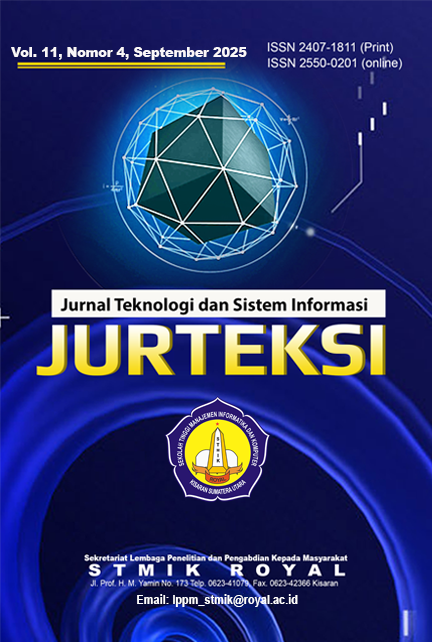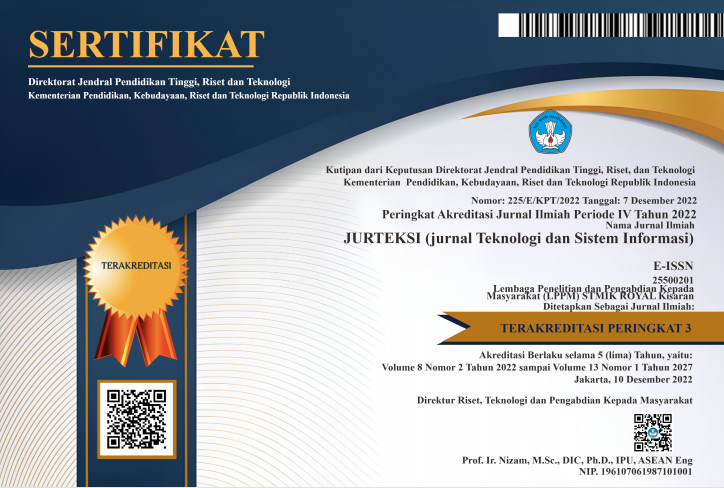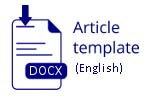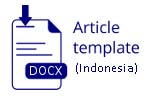DEVELOPMENT OF AN AUGMENTED REALITY APPLICATION FOR LEARNING THE VOLUME AND SURFACE AREA OF THREE-DIMENSIONAL SHAPES
Abstract
Abstract: This study focuses on the development of an Augmented Reality (AR)–based learning application designed to assist students in understanding the mathematical concepts of volume and surface area of three-dimensional geometric shapes. The development process adopted the Multimedia Development Life Cycle (MDLC) model, which consists of six systematic stages: concept, design, material collecting, assembly, testing, and distribution. The research concentrated on the development and expert validation stages. Validation results from content and media experts indicate that the application meets pedagogical and technical feasibility standards. The content expert confirmed that the materials align with the national mathematics curriculum and are presented in a clear, contextual, and accurate manner, while the media expert highlighted the user-friendly interface, interactive features, and visual appeal of the application. Theoretically, this AR-based medium bridges the gap between abstract mathematical concepts and concrete visualization by enabling students to interact directly with virtual 3D objects. Practically, the application enhances learning motivation and engagement by providing dynamic, interactive experiences. Overall, this research contributes to the advancement of educational technology by offering a systematic model for developing AR-based learning media that support active and meaningful learning in the digital era.
Keywords: Augmented Reality; geometry learning; surface area ; volume
References
L. Dorel, “The Relationship Between Visual and Abstract Comprehension in Spatial Geometry, and its Importance to Developing Spatial Perception and Vision,” International Journal for Technology in Mathematics Education, vol. 30, no. 4, 2023, doi: 10.1564/tme_v30.4.3.
S. Jablonski and M. Ludwig, “Teaching and Learning of Geometry—A Literature Review on Current Developments in Theory and Practice,” 2023. doi: 10.3390/educsci13070682.
A. Downton and S. Livy, “Insights into Students’ Geometric Reasoning Relating to Prisms,” Int J Sci Math Educ, vol. 20, no. 7, 2022, doi: 10.1007/s10763-021-10219-5.
T. Lehmann, “Learning to calculate surface area: a focus on strategy choice,” Research in Mathematics Education, vol. 25, no. 3, 2023, doi: 10.1080/14794802.2022.2081991.
S. W. Siyepu and S. W. Vimbelo, “Pre-service teachers’ mathematical engagement in learning about the total surface areas of geometrical solids,” S Afr J Educ, vol. 41, no. 2, 2021, doi: 10.15700/saje.v41n2a1837.
S. P. Pakpahan, A. Sapta, and U. K. Nisa, “Development of Augmented Reality In Understanding The Nets and Ribs of Spatial Buildings,” JURTEKSI (Jurnal Teknologi dan Sistem Informasi), vol. 10, no. 1, 2023, doi: 10.33330/jurteksi.v10i1.2972.
K. Boonstra, M. Kool, A. Shvarts, and P. Drijvers, “Theories and practical perspectives on fostering embodied abstraction in primary school geometry education,” Front Educ (Lausanne), vol. 8, 2023, doi: 10.3389/feduc.2023.1162681.
D. Kamińska et al., “Augmented Reality: Current and New Trends in Education,” 2023. doi: 10.3390/electronics12163531.
C. Avila-Garzon, J. Bacca-Acosta, Kinshuk, J. Duarte, and J. Betancourt, “Augmented Reality in Education: An Overview of Twenty-Five Years of Research,” Contemp Educ Technol, vol. 13, no. 3, 2021, doi: 10.30935/cedtech/10865.
G. Singh, G. Singh, N. Tuli, and A. Mantri, “Hyperspace AR: an augmented reality application to enhance spatial skills and conceptual knowledge of students in trigonometry,” Multimed Tools Appl, vol. 83, no. 21, 2024, doi: 10.1007/s11042-023-17870-w.
S. Solehatin, S. Aslamiyah, D. A. A. Pertiwi, and K. Santosa, “Augmented reality development using multimedia development life cycle (MDLC) method in learning media,” Journal of Soft Computing Exploration, vol. 4, no. 1, 2023, doi: 10.52465/joscex.v4i1.118.
A. Stanciulescu, F. Castronovo, and J. Oliver, “Assessing the impact of visualization media on engagement in an active learning environment,” Int J Math Educ Sci Technol, vol. 55, no. 5, 2024, doi: 10.1080/0020739X.2022.2044530.
J. C. Castro-Alonso, B. B. de Koning, L. Fiorella, and F. Paas, “Five Strategies for Optimizing Instructional Materials: Instructor- and Learner-Managed Cognitive Load,” 2021. doi: 10.1007/s10648-021-09606-9.
S. Schneider, F. Krieglstein, M. Beege, and G. D. Rey, “Successful learning with whiteboard animations – A question of their procedural character or narrative embedding?,” Heliyon, vol. 9, no. 2, 2023, doi: 10.1016/j.heliyon.2023.e13229.
L. Hasanah Lubis, B. Febriani, R. Fitra Yana, A. Azhar, and M. Darajat, “The Use of Learning Media and its Effect on Improving the Quality of Student Learning Outcomes,” International Journal Of Education, Social Studies, And Management (IJESSM), vol. 3, no. 2, 2023, doi: 10.52121/ijessm.v3i2.148.
A. Skulmowski and K. M. Xu, “Understanding Cognitive Load in Digital and Online Learning: a New Perspective on Extraneous Cognitive Load,” 2022. doi: 10.1007/s10648-021-09624-7.
A. Beik and Y. Cho, “Effects of goal orientation on online learning: A meta-analysis of differences in Korea and US,” Current Psychology, vol. 43, no. 2, 2024, doi: 10.1007/s12144-023-04389-4.
S. J. Han, D. H. Lim, and E. Jung, “A Collaborative Active Learning Model as a Vehicle for Online Team Learning in Higher Education,” pp. 40–59. doi: 10.4018/978-1-5225-5557-5.ch003.













